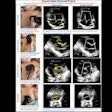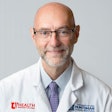Radiologist participation in global health efforts may be hindered by a lack of faculty expertise and less time in education curricula, suggest findings published October 19 in Clinical Imaging.
Despite over 70% of surveyed radiology program directors in Canada agreeing that global health’s role is important, only about three out of 10 programs include global health in their curricula, reported a team led by Mehrshad Bakhshi, MD, from McGill University in Montreal, Quebec, Canada.
“Expanding faculty capacity, embedding global health radiology themes into existing curricula, and developing national frameworks may help bridge the gap between interest and practice, advancing socially responsible radiology training in Canada,” Bakhshi and colleagues wrote.
Global health radiology aims to improve imaging access, quality, and training in underserved regions. Radiology leaders in the U.S. and Canada in recent years have expressed interest in taking part in global health initiatives.
The researchers noted a lack of data on the perspectives of Canadian radiology program directors when it comes to including global health in radiology education. In a previous study, Bakhshi and colleagues surveyed radiology residents and found that nearly two-thirds of respondents reported previous work in developing countries. They also found that nearly half of the surveyed residents expressed interest in global health imaging efforts.
For the current study, the researchers explored the views of program directors on global health radiology’s relevance, resident and faculty engagement, barriers to integration, and future directions.
The study included survey responses from 14 of the 16 accredited Canadian radiology residency programs.
The team reported the following findings:
About 72% of respondents rated radiology as “essential” or “very important” to global health, while 79% considered global health radiology to be a valid academic career path.
About 86% deemed formal training to be at least moderately important for global health, but only 29% of programs included it in curricula. Twenty-one percent offered global health radiology electives.
Half of program directors reported some engagement among faculty with global health initiatives, “typically less than one half-day per week.”
About 57% of directors noted increased demand among residents over the past five years.
Barriers included a lack of faculty expertise (71%), curriculum time constraints (64%), and a lack of national guidelines (57%).
The results show a disconnect between perceived importance and practical implementation for global health radiology, the study authors highlighted.
“Programs can develop faculty capacity through targeted professional development, including workshops, mentorship, and collaboration with experienced global health educators,” they wrote.
The investigators also suggested that embedding global health themes into existing courses could help build more interest.
“Adopting or adapting published competency frameworks … can help programs tailor expectations to local needs and resources,” they wrote.
Read the full study and the strategies the team outlined here.




















